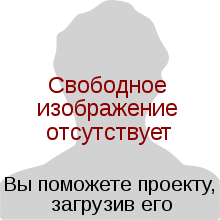- Maenoyama Tarō
-
前の山 太郎
Maenoyama Tarō
Personal information Born Kazuichi Kaneshima
March 9, 1945
Osaka, JapanHeight 1.87 m (6 ft 1 1⁄2 in) Weight 130 kg (290 lb) Career Heya Takasago Record 487-397-48 Debut March, 1961 Highest rank Ozeki (September, 1970) Retired March, 1974 Yūshō 1 (Juryo) Sanshō Fighting Spirit (2)
Outstanding Performance (3)Kinboshi 1 (Kashiwado) * Career information is correct as of July 2007. Maenoyama Tarō (born 9 March 1945 as Kazuichi Kaneshima) is a former sumo wrestler from Osaka Prefecture, Japan. He began his career in 1961, reaching the top makuuchi division in 1966. His highest rank was ozeki which he held from 1970 until 1972. He retired in 1974 and became head coach of the Takadagawa stable. He left the Sumo Association in 2010 upon turning 65.
Contents
Career
He was born in Moriguchi, of Korean descent. He entered Takasago stable and made his professional debut in March 1961. He reached sekitori status in November 1965 upon promotion to the juryo division and reached the top makuuchi division in September 1966. He made his sanyaku debut in March 1968 at sekiwake. In May 1969 he defeated yokozuna Kashiwado on opening day and went on to win 11 bouts, receiving his first sansho or special prize, for Fighting Spirit. He was promoted to sumo's second highest rank of ozeki in July 1970 after two consecutive runner-up performances to yokozuna Kitanofuji, the second coming in a play-off. His ozeki debut was inauspicious as he missed the entire tournament through injury. He was unable to win more than nine bouts in any of his ten tournaments at ozeki rank, and was demoted from ozeki in March 1972 after injury problems meant he had two consecutive losing scores. He continued to compete in the lower ranks until March 1974 when he announced his retirement from active competition at the age of 29.
Retirement from sumo
He became an elder of the Japan Sumo Association under the name Takadagawa and established the Takadagawa stable in April 1974. He produced such top division wrestlers as komusubi Maenoshin and Kenko, and maegashira Kiraiho. It was once part of the Takasago ichimon (group of stables). However, the stable became a pariah after Takadagawa ran for the leadership of the Sumo Association in 1998 against the wishes of the Takasago ichimon. As a result, he was forced to leave the Takasago camp. There was some belief that he would join the Dewanoumi group but instead the stable went independent and is not attached to any ichimon. In December 2008 it was announced that former sekiwake Akinoshima would be his successor. Takadagawa stood down in August 2009 to ease the transition. The two swapped elder names, and he became Sendagawa Oyakata. He left the Japan Sumo Association in March 2010 upon reaching the mandatory retirement age of 65.
Fighting style
Maenoyama's favourite techniques were tsukidashi (thrust out), hidari-yotsu (a right hand outside, left hand inside grip on his opponent's mawashi) and yorikiri (force out).
Top division record
Maenoyama Tarō[1]
year in sumo January
Hatsu basho, TokyoMarch
Haru basho, OsakaMay
Natsu basho, TokyoJuly
Nagoya basho, NagoyaSeptember
Aki basho, TokyoNovember
Kyūshū basho, Fukuoka1966 x x x x West Maegashira #14
8–7
East Maegashira #9
11–4
1967 West Maegashira #1
4–11
East Maegashira #8
9–6
West Maegashira #3
4–11
East Maegashira #5
9–6
East Maegashira #2
4–11
East Maegashira #8
10–5
1968 East Maegashira #2
9–6
West Sekiwake #1
7–8
West Maegashira #1
9–6
East Komusubi #2
8–7
West Komusubi #1
9–6
West Sekiwake #1
8–7
1969 East Sekiwake #1
5–10
West Maegashira #2
8–7
West Maegashira #1
11–4
F★West Sekiwake #1
10–5
OWest Sekiwake #1
8–7
West Sekiwake #2
8–7
1970 West Sekiwake #2
8–7
West Sekiwake #2
9–6
OEast Sekiwake #1
12–3
OEast Sekiwake #1
13–2–P
F
Sat out due to injury
0–0–15West Ōzeki #2
9–6
1971 West Ōzeki #2
9–6
East Ōzeki #2
8–7
West Ōzeki #2
8–7
East Ōzeki #2
8–7
West Ōzeki #2
8–7
West Ōzeki #2
8–7
1972 East Ōzeki #2
3–2–10
East Ōzeki #2
6–7–2
East Sekiwake #2
7–8
West Komusubi #1
8–7
West Komusubi #1
5–10
West Maegashira #3
5–4–6
1973 East Maegashira #9
10–5
West Maegashira #2
7–8
West Maegashira #3
4–11
West Maegashira #11
9–6
East Maegashira #6
8–7
East Maegashira #4
8–7
1974 East Maegashira #1
4–11
West Maegashira #8
Retired
0–6–0x x x x Record given as win-loss-absent Top Division Champion Retired Lower Divisions
Sanshō key: F=Fighting spirit; O=Outstanding performance; T=Technique Also shown: ★=Kinboshi(s) P=Playoff(s)
Makuuchi ranks: Yokozuna — Ōzeki — Sekiwake — Komusubi — Maegashira
Divisions: Makuuchi — Jūryō — Makushita — Sandanme — Jonidan — JonokuchiSee also
- Glossary of sumo terms
- List of sumo tournament second division winners
- List of past sumo wrestlers
References
- ^ "Maenoyama Taro Rikishi Information". Sumo Reference. http://sumodb.sumogames.com/Rikishi.aspx?r=4041. Retrieved 2007-11-10.
Categories:- 1945 births
- Living people
- Japanese sumo wrestlers
- People from Moriguchi
- Japanese people of Korean descent
- Ōzeki
Wikimedia Foundation. 2010.
